On View
As Kusama’s ‘Infinity Mirrors’ Opens in LA, the Broad Adopts a 30-Second Rule to Cope With the Selfie-Crazed Hordes
The museum sold out 90,000 tickets in a few hours.
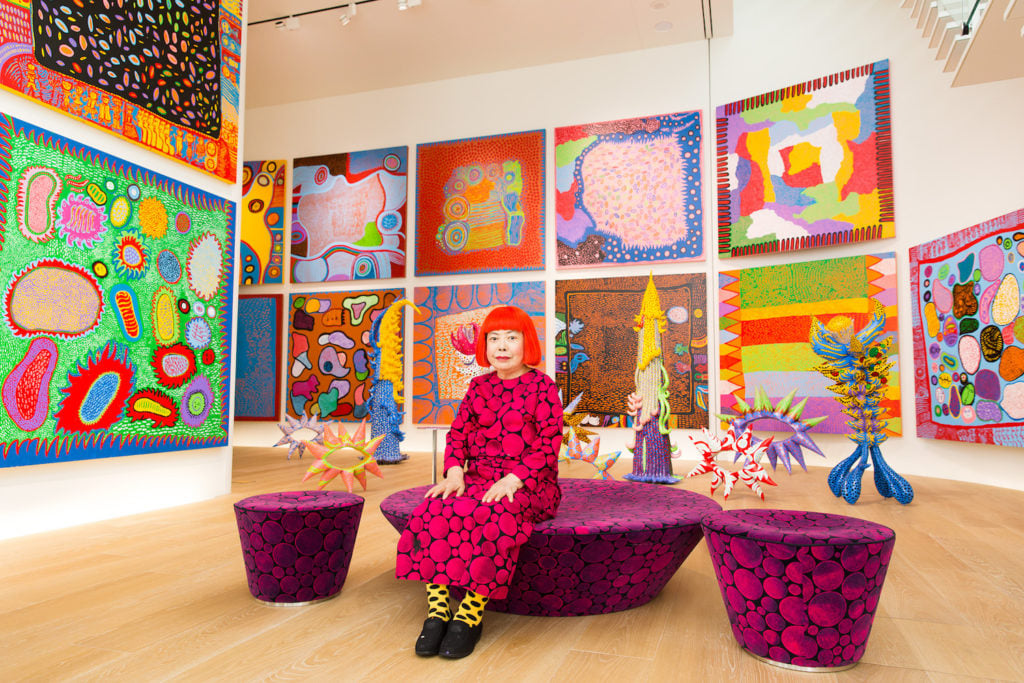
The museum sold out 90,000 tickets in a few hours.

Sarah Cascone

A select group of social media “influencers” were among the first Angelenos to see “Yayoi Kusama: Infinity Mirrors,” opening to the public on October 21 at the Broad—the first US museum survey dedicated to the insanely popular installations. Dressed to impress, the Instagrammers wandered through the exhibition, cell phones in hand, striving to capture the perfect art selfie to share.
“I got a little stressed because you had like one second to take pictures,” a woman admitted to her friend upon stepping out of Infinity Mirrored Room – The Souls of Millions of Light Years Away (2013), on permanent view at the Broad, and the first piece visitors encounter in the new show.
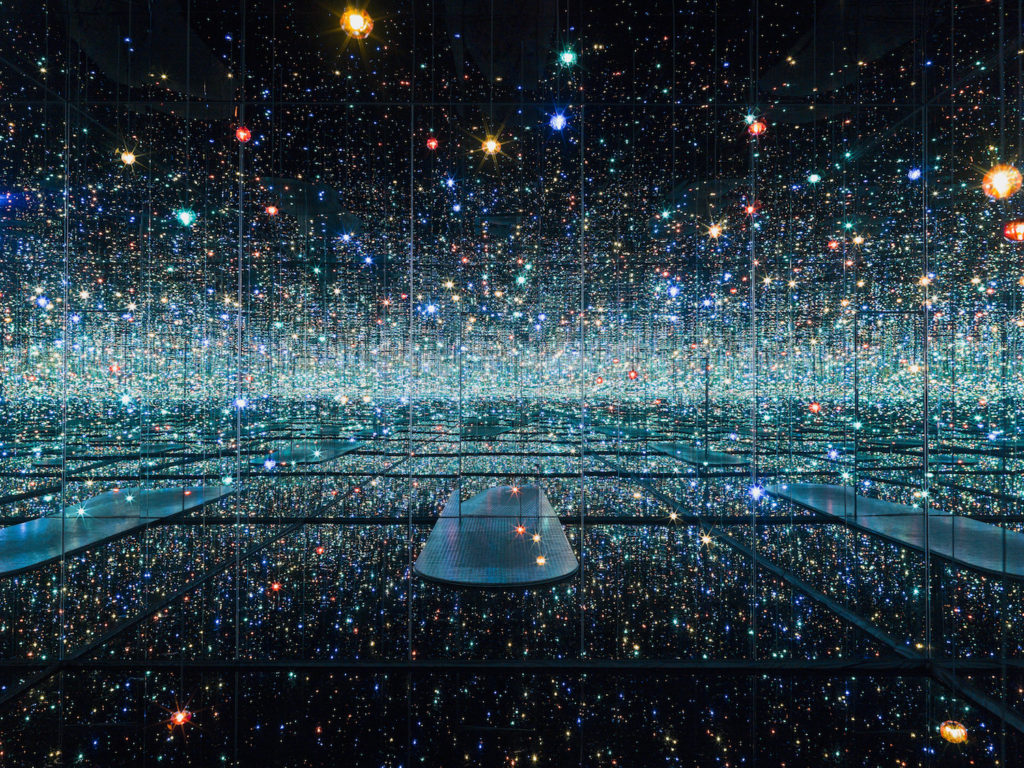
Yayoi Kusama, Infinity Mirrored Room –The Souls of Millions of Light Years Away (2013). Courtesy of David Zwirner, New York. © Yayoi Kusama.
In reality, guests are allowed 30 seconds in each of the exhibition’s six kaleidoscopic “Infinity Mirror Rooms,” small box-shaped spaces that combine mirrors and lights to stunning effect. On a normal day, the Broad allows for 45-second visits, but has shortened the experience for the duration of the show to help accommodate crowds.
All 90,000 of the Broad’s $25 advance tickets sold out within hours in September and lines are expected to wrap around the block for standby tickets, which cost $30. The Broad knew to expect crowds because this is the third museum on the show’s North American tour. Its first stop, at the Hirshhorn Museum and Sculpture Garden in Washington, DC, saw the institution’s average spring attendance double to a record 475,000 visitors. In Seattle this summer, local news outlets provided extensive tips on how to secure entry to the must-see exhibition.
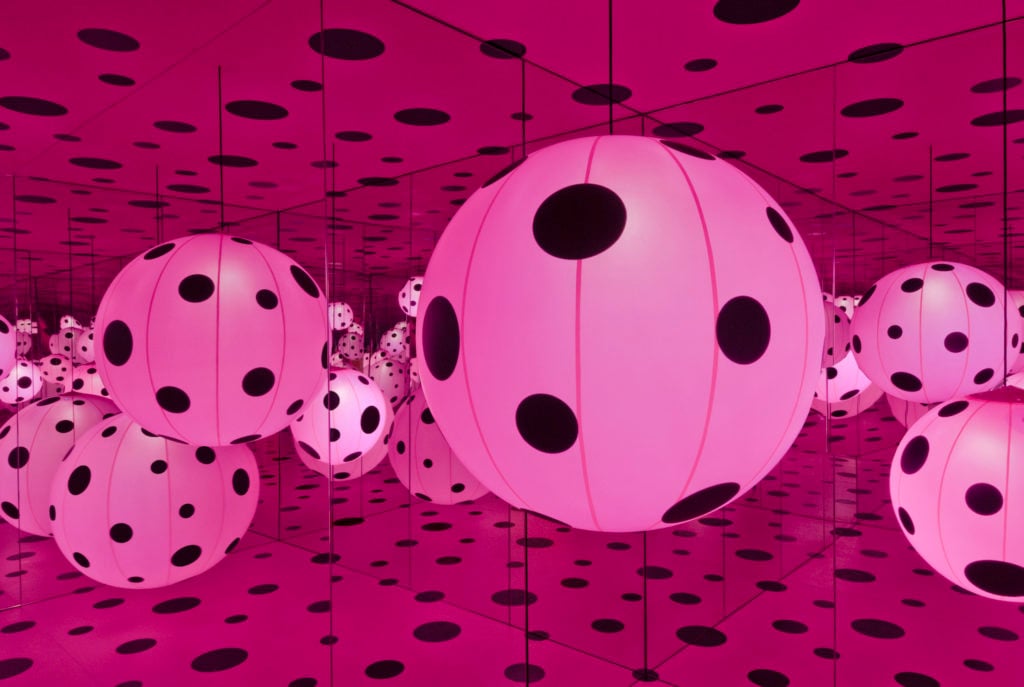
Yayoi Kusama, Dots Obsession – Love Transformed Into Dots (2007) at the Hirshhorn Museum and Sculpture Garden. Courtesy of Ota Fine Arts, Tokyo/Singapore; Victoria Miro, London; David Zwirner, New York. © Yayoi Kusama. Photo by Cathy Carver.
The ticket price includes admission to not only the six Infinity Rooms, but also 60 paintings and sculptures by the 88-year-old Japanese artist, as well as photographs documenting her “Happenings” from the 1960s in New York, and other archival materials.
For many, however, the real attraction is the chance to take pictures inside Kusama’s infinite, twinkling landscapes. The draw of these photo ops is so strong that it’s rumored that the visitor who accidentally smashed a Kusama pumpkin sculpture at the Hirshhorn in February did so while trying to take a selfie.
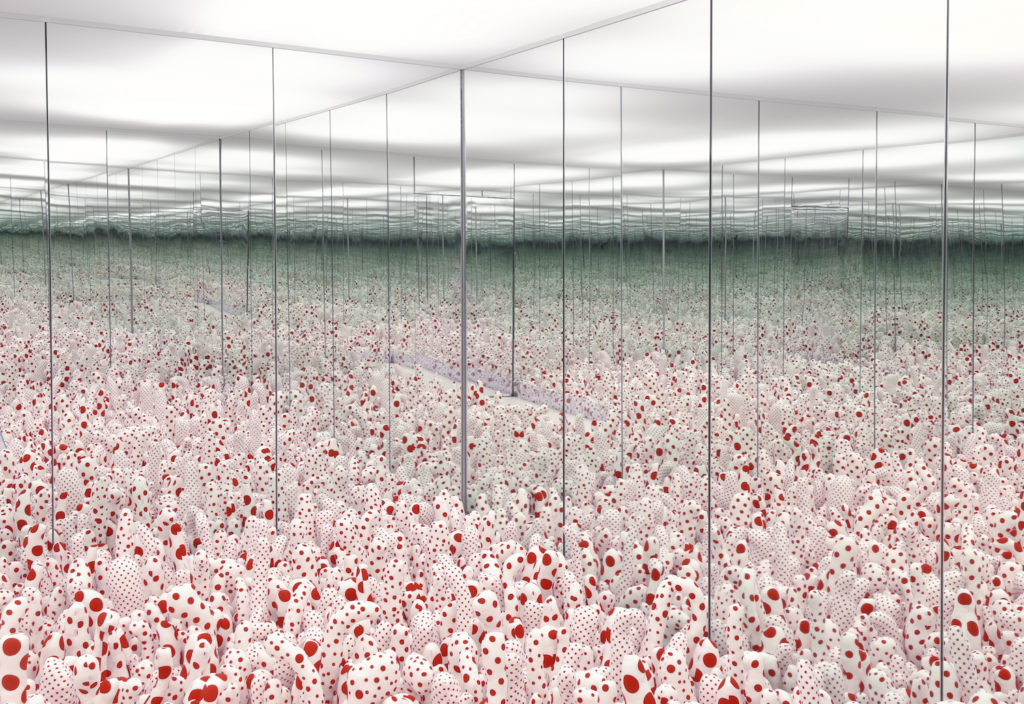
Yayoi Kusama, Infinity Mirror Room—Phalli’s Field (1965) at the Hirshhorn Museum and Sculpture Garden. Courtesy of Ota Fine Arts, Tokyo/Singapore; Victoria Miro, London; David Zwirner, New York. © Yayoi Kusama. Photo by Cathy Carver.
Although the works seem tailor-made for the age of social media, Kusama first introduced the work back in the 1960s. Her first room, Phalli’s Field (1965), filled with stuffed, tentacle-like white sculptures decorated with red polka dots, is part of the current exhibition.
One fascinating document on view at the Broad is a 1966 press release from New York’s Castellane Gallery, announcing Kusama’s fourth room in the series. It would be the last one she made for 25 years, however. After debuting it, she returned to Tokyo, where, in 1977, she checked herself into the psychiatric hospital that she still calls home today.

Yayoi Kusama, All the Eternal Love I Have for the
Pumpkins (2016). Courtesy of Ota Fine Arts, Tokyo/Singapore; Victoria Miro, London; David Zwirner, New York. © Yayoi Kusama. Photo by Cathy Carver.
Today, the artist has 20 Infinity Rooms in her oeuvre. The most recent, on view at the Broad, is All the Eternal Love I Have for the Pumpkins (2016). The piece, the only one in the exhibition that does not allow photography, features more than 60 yellow acrylic pumpkins with stripes of black polka dots, lit from within by LED lights and displayed on a floor of black glass. (Two new Infinity Mirror Rooms will debut at New York’s David Zwirner Gallery next month.)
Kusama’s work is often described with adjectives like “mind-bending,” and for good reason: her art is inspired by her mental illness. “All my works in pastels are the products of obsessional neurosis and are therefore inextricably connected to my disease,” she told BOMB in a 1999 interview.
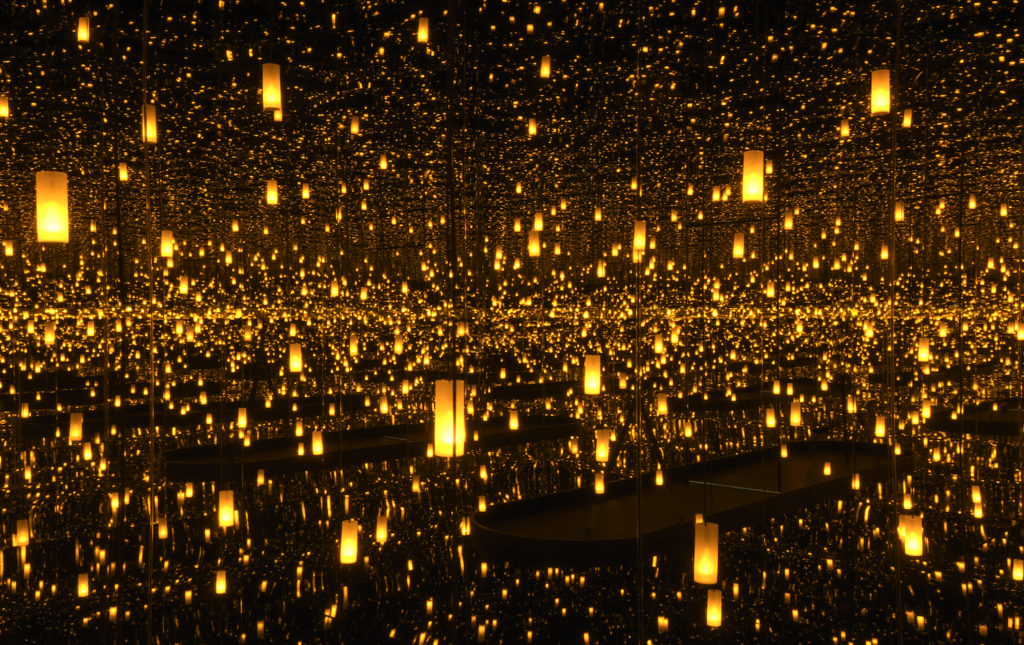
Yayoi Kusama, Aftermath of Obliteration of Eternity (2009) at the Hirshhorn Museum and Sculpture Garden. Courtesy of Ota Fine Arts, Tokyo/Singapore; Victoria Miro, London; David Zwirner, New York. © Yayoi Kusama. Photo by Cathy Carver.
A master of painting, performance art, sculpture, and installation, Kusama has dedicated herself to her work with a rare intensity since the 1950s, driven by the desire to translate her hallucinatory visions into art. Stepping into one of her rooms, the viewer is meant to contemplate their own insignificance in the face of infinitude.
“Our earth is only one polka dot among a million stars in the cosmos,” reads a quote from Kusama on one of the gallery walls.
Sadly, a blockbuster museum show—overrun with crowds and photo-takers eager to increase their follower count—is not necessarily the best context to reflect on the mysterious beauty of infinity.
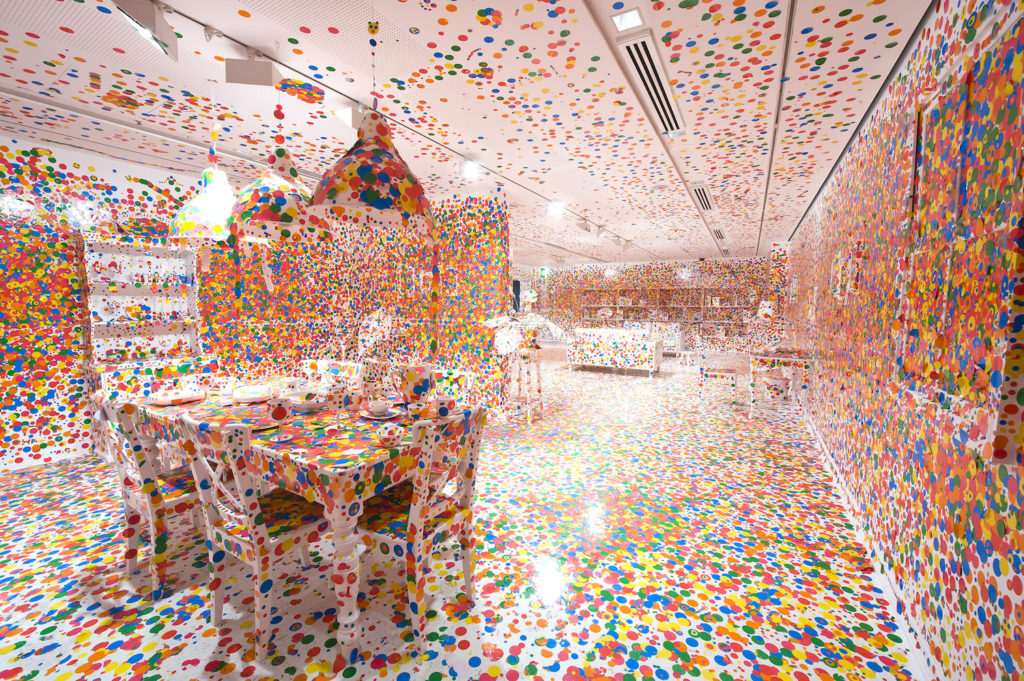
Yayoi Kusama, The Obliteration Room (2002). Courtesy of the Queensland Art Gallery Foundation/QAGOMA Photography. © Yayoi Kusama.
Visitors can expect to be funneled through the exhibition—once you leave a room, you must continue forward, to the next line for the next artwork. The grand finale is The Obliteration Room (2002), an all white space that visitors are invited to cover with colored polka dot stickers, transforming it over the course of the show’s run.
Being immersed in Kusama’s mirrored wonderlands is a fleeting pleasure, and the desire to capture that unique moment with a photo is understandable. (The artist has in the past said that selfies are logical extensions of her work.) Nevertheless, the smart phone is both a blessing and a curse at “Infinity Mirrors”: The very device that allows us to share something otherworldly and beautiful with those we love is what ultimately disconnects us from what could otherwise be a truly moving experience.
See more photos of the exhibition below.
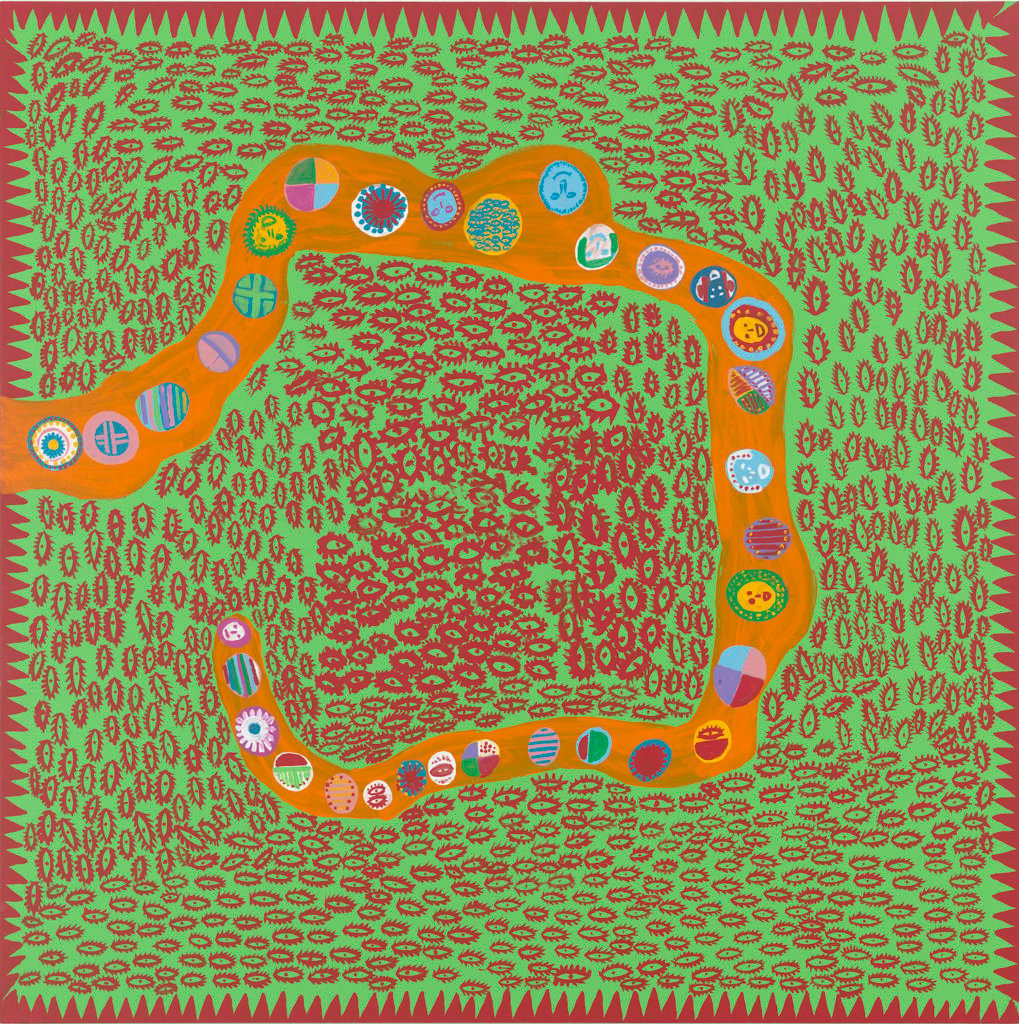
Yayoi Kusama, Searching for Love (2013). Collection of Miyoung Lee and Neil Simpkins. Image © Yayoi Kusama. Courtesy of David Zwirner, New York; Ota Fine Arts, Tokyo/Singapore; Victoria Miro, London.
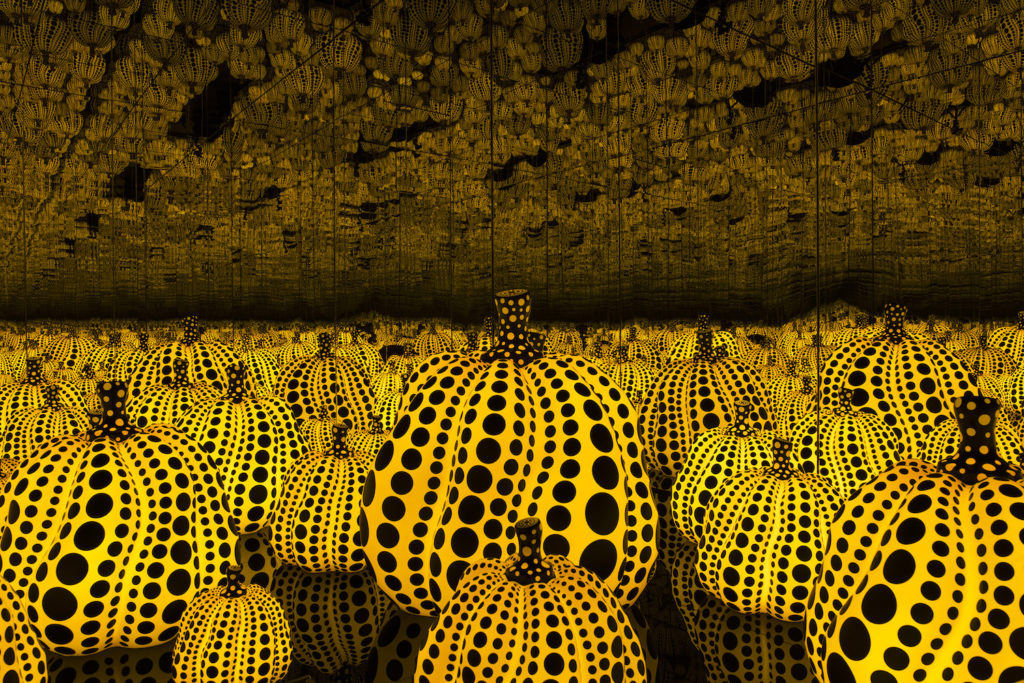
Yayoi Kusama, All the Eternal Love I Have for the Pumpkins (2016). Courtesy of Ota Fine Arts, Tokyo/Singapore; Victoria Miro, London; David Zwirner, New York. © Yayoi Kusama. Photo by Cathy Carver.
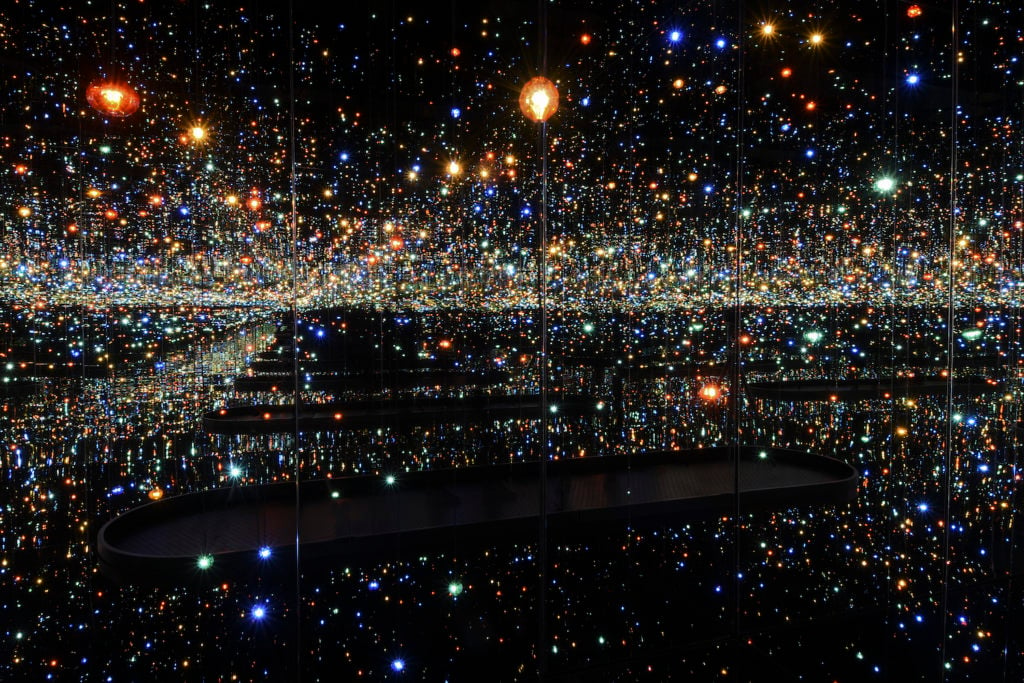
Yayoi Kusama, Infinity Mirrored Room –The Souls of Millions of Light Years Away (2013). Courtesy of David Zwirner, New York. © Yayoi Kusama. Photo by Cathy Carver.

Installation view of “Yayoi Kusama: Infinity Mirrors” at the Hirshhorn Museum and Sculpture Garden, 2017. Left to right: Living on the Yellow Land
(2015), My Adolescence in Bloom (2014),
Welcoming the Joyful Season (2014), Surrounded
by Heartbeats 2014), Unfolding Buds (2015), Story After Death (2014). Photo by Cathy Carver.
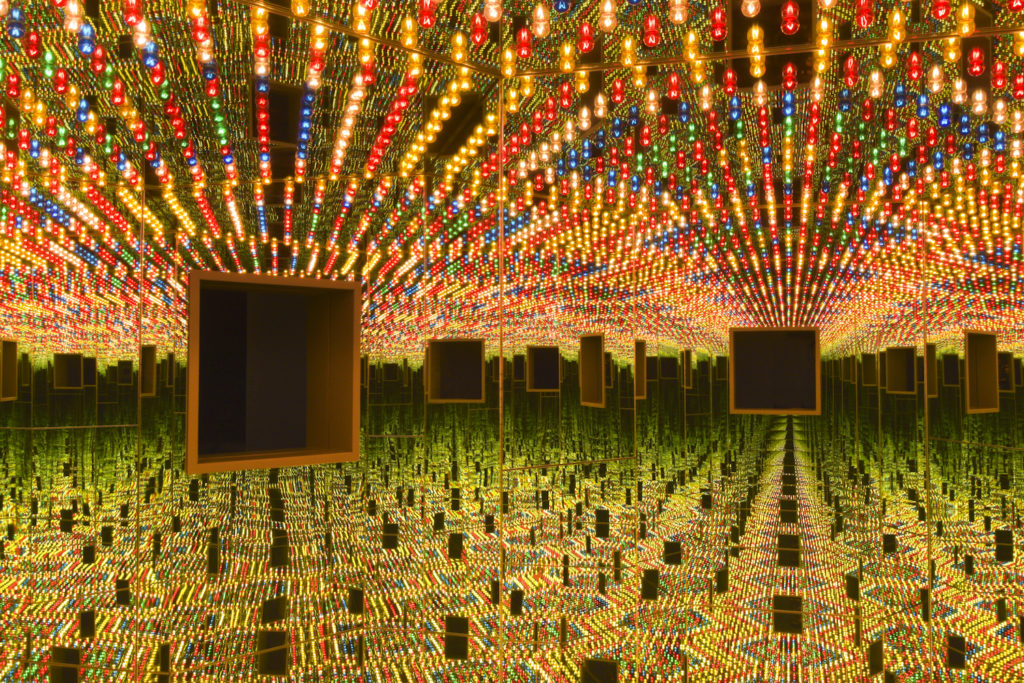
Yayoi Kusama, Infinity Mirrored Room – Love Forever (1966/94) at the Hirshhorn Museum and Sculpture Garden. Courtesy of Ota Fine Arts, Tokyo/Singapore; Victoria Miro, London; David Zwirner, New York. © Yayoi Kusama. Photo by Cathy Carver.
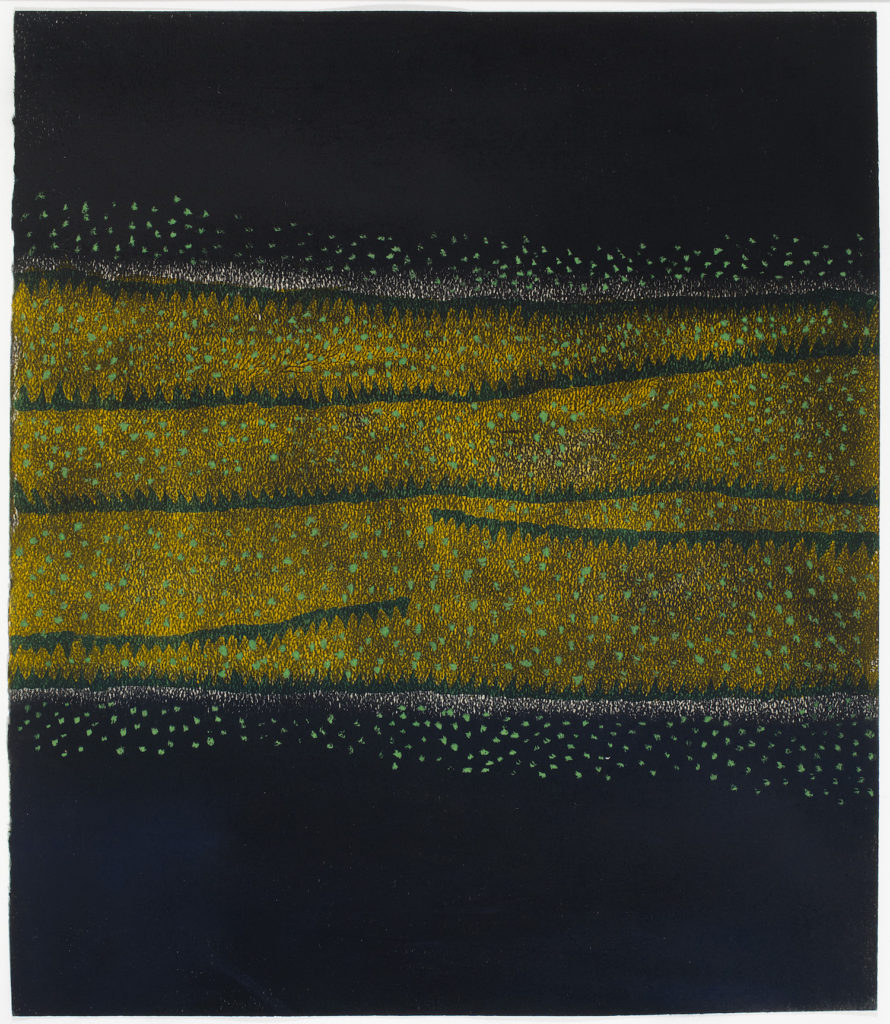
Yayoi Kusama, The Hill, 1953 A (No. 30) (1953). Hirshhorn Museum and Sculpture Garden, Washington, DC. © Yayoi Kusama. Photo by Cathy Carver.

Yayoi Kusama, Life (Repetitive Vision) (1998) at the Hirshhorn Museum and Sculpture Garden, 2017. Photo by Cathy Carver.
“Yayoi Kusama: Infinity Mirrors” is on view at the Broad, 221 South Grand Avenue, Los Angeles, October 21, 2017–January 1, 2018. It then travels to the Art Gallery of Ontario in Toronto, March 3–May 27, 2018; the Cleveland Museum of Art, July 7–September 30, 2018; and the High Museum of Art in Atlanta, November 18, 2018–February 17, 2019.